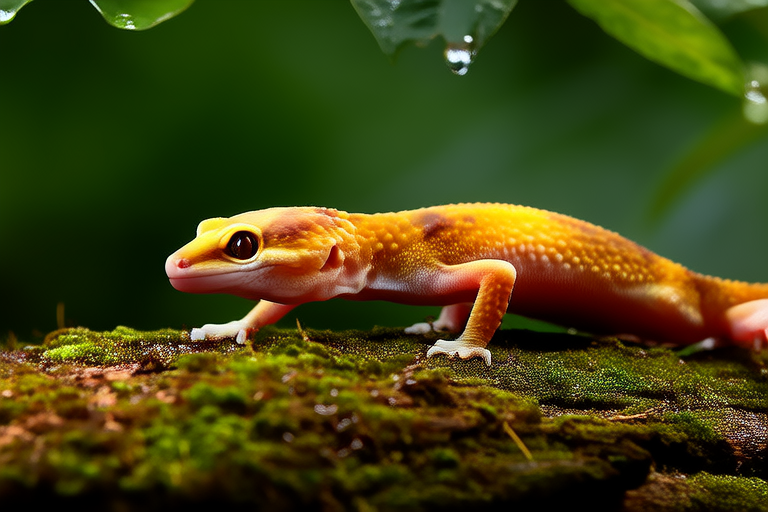Transforming Your Space with Color-Changing Magic: A Journey into the World of Chameleons
Welcome to a world where colors come alive and transform before your very eyes! In this article, we embark on a journey into the captivating realm of chameleons, those enigmatic reptiles known for their extraordinary ability to change colors. We will delve into the science behind this mesmerizing phenomenon, explore the diverse species of chameleons, and provide essential tips for setting up an ideal habitat for these enchanting creatures. By the end, you’ll be inspired to appreciate these unique animals and consider them as captivating additions to your home.
The Myth-Busting Ability of Chameleons
Chameleons have long been associated with the ability to blend into their surroundings by changing their skin color. However, this popular belief is only partially accurate. Contrary to the myth that chameleons change colors solely for camouflage, they actually use this remarkable ability for a variety of purposes. While it is true that chameleons can alter their appearance to match their environment, their primary reason for doing so is communication, mood regulation, and thermoregulation.
The Science Behind Color-Changing Magic
The secret to a chameleon’s color-changing abilities lies within specialized cells called chromatophores. These cells contain pigments that reflect different wavelengths of light, creating the vibrant hues we see. Chameleons possess three types of chromatophores: xanthophores (yellow), erythrophores (red), and guanophores (blue). When a chameleon wants to change its color, it expands or contracts these cells, altering the amount of light reflected and absorbed. This process allows chameleons to display a wide range of colors and patterns.
Diverse Species of Chameleons
There are over 200 species of chameleons, each with its own unique color ranges and patterns. The most well-known species is the panther chameleon, native to Madagascar, which boasts stunning iridescent colors including electric blue, bright green, and fiery orange. Another notable species is the veiled chameleon, found in the Arabian Peninsula, characterized by its distinctive horn and vibrant stripes. Additionally, Jackson’s chameleons, native to East Africa, feature striking tricolor patterns and a trio of horns on their heads.
Setting Up the Ideal Habitat
Creating the perfect environment for your chameleon is crucial for their health and happiness. Here are some essential tips for setting up an ideal habitat:
- Lighting: Chameleons require full-spectrum UVB lighting to synthesize vitamin D3 and absorb calcium. Place the light source at one end of the enclosure to create a gradient of temperatures.
- Temperature: Maintain a temperature gradient between 75°F and 95°F (24°C to 35°C) during the day, with a basking spot reaching up to 100°F (38°C). At night, temperatures should drop to around 65°F to 75°F (18°C to 24°C).
- Humidity: Chameleons need high humidity levels, typically between 50% and 70%. Ensure proper ventilation while maintaining adequate moisture by misting the enclosure regularly.
Responsibilities and Considerations
Owning a chameleon comes with significant responsibilities. Here are some important factors to consider:
- Diet: Chameleons are insectivores, primarily feeding on crickets, mealworms, and other insects. It’s essential to offer a varied diet to ensure proper nutrition. Dust their food with calcium and multivitamin supplements to prevent deficiencies.
- Health Care: Regular visits to a veterinarian specializing in reptiles are necessary to monitor your chameleon’s health. Watch for signs of illness, such as lethargy, loss of appetite, or changes in behavior.
- Handling: Chameleons are delicate creatures and do not enjoy being handled frequently. Handle them gently and infrequently to avoid stress and injury.
Appreciating Chameleons’ Unique Personalities
Beyond their magical colors, chameleons have distinct personalities that make them fascinating companions. Each chameleon has its own temperament and preferences, whether it’s more active during the day or enjoys hiding in the foliage. By observing their behavior and providing the right environment, you can develop a bond with your chameleon and truly appreciate their unique qualities.
In conclusion, chameleons are not just beautiful creatures with the ability to change colors; they are complex animals with intricate behaviors and needs. By understanding the science behind their color-changing abilities, exploring the diversity of chameleon species, and learning about the responsibilities of ownership, you can create a fulfilling and enriching experience for both you and your chameleon. Consider adding a chameleon to your home, not just for their captivating colors but also for their unique personalities and the joy they bring.
